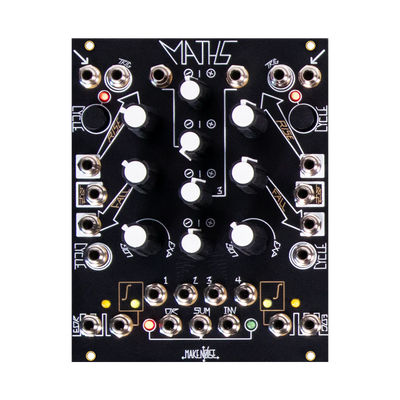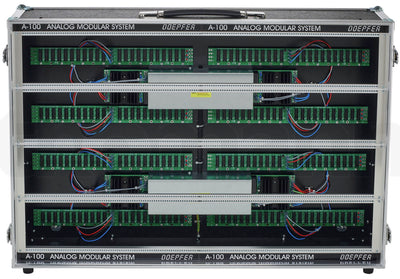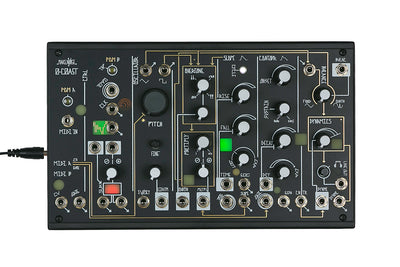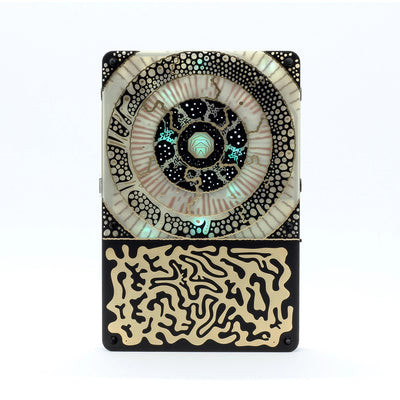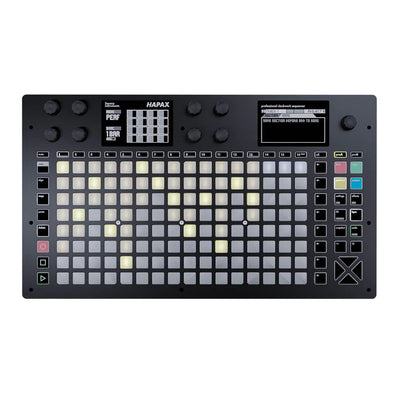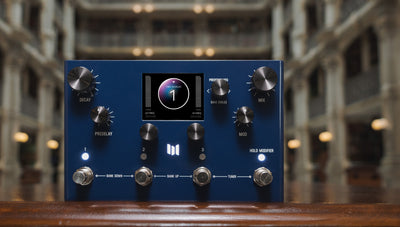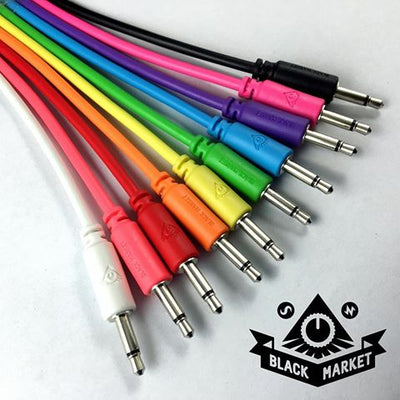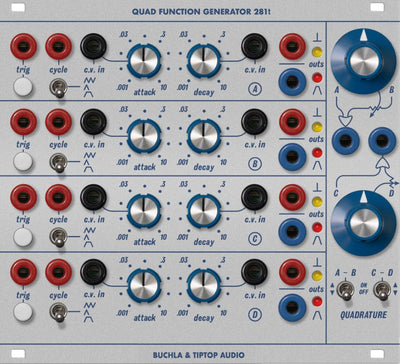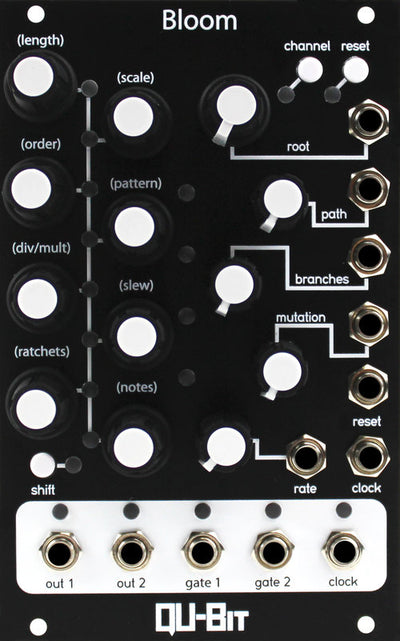Three + Four = Heaven. The SE-3X: a three-voice paraphonic synth with four discrete, classic hardware filters.
Seen where the sound of success was heard, the SE-1(X)’s popularity with hitmakers, film composers and sound designers has spanned decades, and the 'X never quite rode off into the sunset. Now, it's blazing back with software sweetening and sweeping hardware refinements — innovations worthy of 30 years of rack time… and your time. Built attractively, built solidly, bringing you the bump 'n' thump and higher frequency clarity and warmth that has been the secret weapon of legends. ‘3X Paraphonic software available as a Flash ROM chip upgrade for ‘1X users.
NEW FEATURES
- Exponential glide routine from the OMEGA and the original linear glide.
- OMEGA / SE-02 Envelope routines in addition to the original linear & magical quasi-exponential Envelopes.
- Panel control for Oscillator Mix.
- Panel control for Oscillator 2 & 3 Fine Tune.
- LFO Gate from our BOOMSTAR / MIDIMINI V30
- Paraphonic Mode: for easy and electric 3X chords and colors.
- Two fuzz modes: 70s & 90s. Front panel switchable.
- RESONANT FILTER COLLECTION: 24 dB MINI, 24 dB ARP, 24dB, 6dB, “Mix Mode” JUNO/JUPITER. SEM remains the built-in filter. Front panel switchable.
After making it for 10 years or so and getting a lot of customer requests, we decided a major update was in order. The original ROM chip that held the operating system was full, so we designed a new CPU board, using a much larger Flash chip which enabled updating the OS over MIDI. Other standouts included 4 banks of 128 ROM patches, 4 RAM banks, an upsized battery-backed SRAM chip made that possible, and a CV generator boost to produce smoother envelopes and LFOs; the pot reading was greatly improved as well, making that vital programming aspect much faster and smoother.
We continued to sell them for another 10 years...
In 2020, we got a request from one of our top dealers and good friends, Lewis Chiodo at Awave, to make a second special '1X model for him. In addition to the custom hardware he wanted—2 extra VCFs—he wondered if we could include some potent software updates too. At first I declined, since I hadn't been working with the Motorola (now Freescale) chip that ran it for several years, added to that, my development system for it didn't work anymore. After some persuasion however, I decided to try. Progress was painfully slow at first, but I was eventually able to put it all together, with the usual optimistic and determined circuit-bending assist from Greg St. Regis.
The SE-3X… Hard to believe it was nearly 30 years ago the SE-1 helped the world to play… TC
MY SOFTWARE NOTES
- The exponential glide routine from the Omega: Now you can choose that or the original linear glide.
- The Omega/CODE Envelope routines: These show up as EXP2 in the Envelope window; this is in addition to the original linear and magical quasi-exponential Envelopes.
- Page 2 Mix knobs for the Oscillators: Due to space restrictions, the SE-1(X) didn't allow direct control, requiring navigating to the Audio Mixer page for tweaks—tedious. Now holding Shift and using the Pulse Width pots to adjust Oscillator mix levels brings balance and satisfaction.
- OSC 2 & 3 Fine Tune: Hold Shift and rotate 2 & 3 Frequency knobs. Another useful and efficient jump-cut.
- LFO Gate from our Boomstar and Mini V-30, a venerable and most funky feature from the ARP Odyssey and 2600; LFO 3 can now gate the Envelopes: hold Shift and press LFO 3, or send it CC #9. MIDI sync applies, of course when received.
- Lastly for spice and “poly” nice nice, Paraphonic Mode: This allows the 3 oscillators to be played by 3 different MIDI notes, for easy and electric 3X chords. All 3 oscillators still go thru the same VCF and VCA, so it's not truly polyphonic. But with some care and creativity in programming, it can sure swing like it. Check out Marc St. Regis’ SoundCloud demos to see just how warm & snappy our PARA can sound, especially when a DAW is in control.
Audio Outputs: 1
External Inputs: 1
Interface: 1 rotary encoder, 24 knobs, 20 square switches—17 illuminated, one three-way toggle (filter fuzz), one 5-way rotary switch (filter selection), power.
Display: 20 x 4 blue backlit liquid crystal.
Memory: 8 banks of 99: 396 patches in ROM, 396 in RAM.
Weight: 11 lbs.
Dimensions: 3 rack spaces, 8 inches deep.
Power: 90 - 250 volts AC auto switching.
VOICE ARCHITECTURE
MIDI COMMUNICATION


